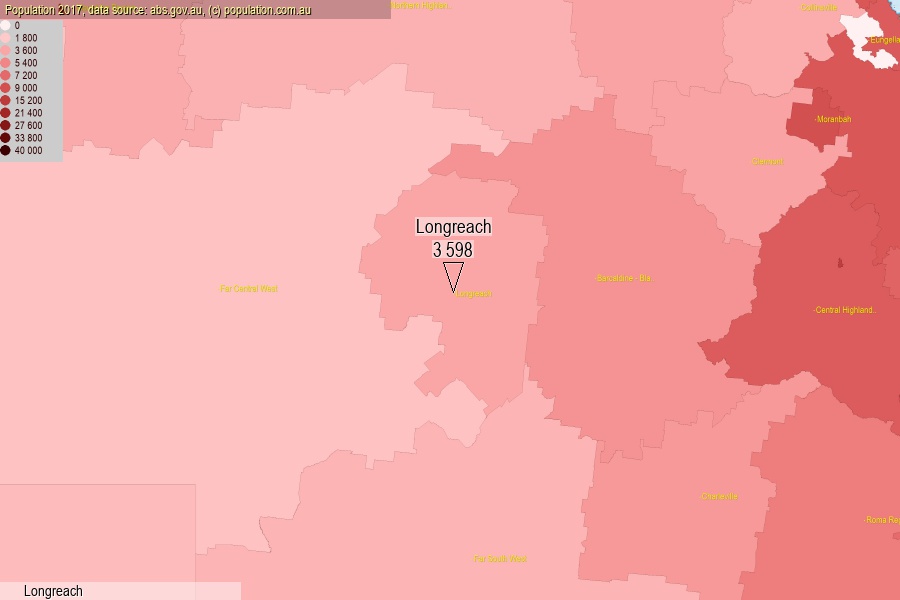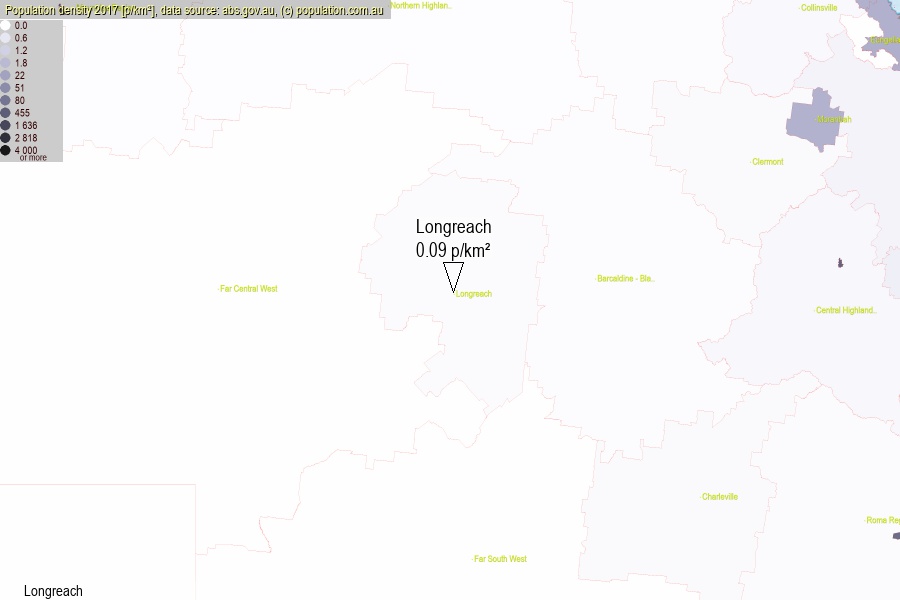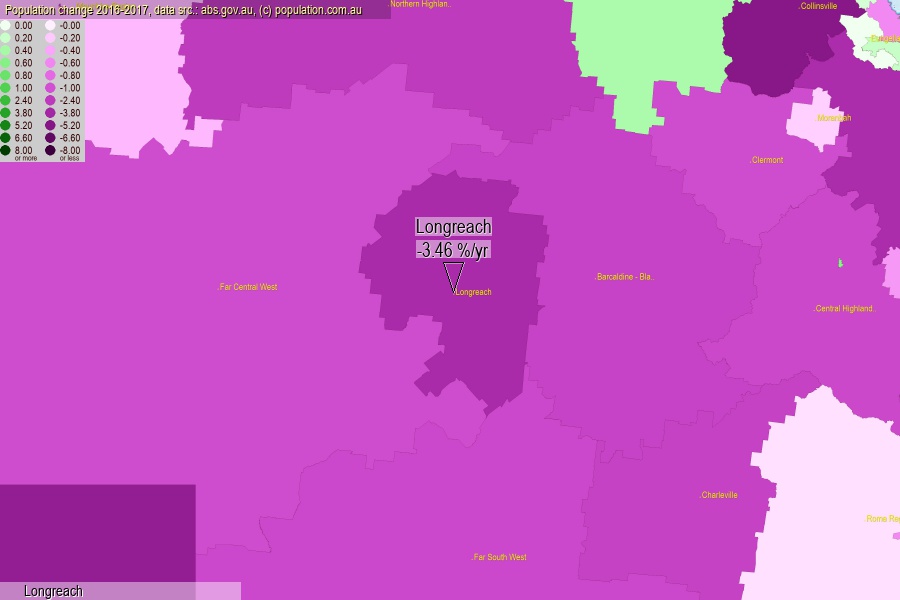 population.com.au
population.com.auLast official estimated population of Longreach (as Statistical Area Level 2) was 3 598 people (on 2017-06-30)[2]. This was 0.01% of total Australian population and 0.072% of QLD population. Area of Longreach is 40 572.20 km², in this year population density was 0.09 p/km² . If population growth rate would be same as in period 2016-2017 (-3.46%/yr), Longreach population in 2025 would be 2 714. [0]



Click to enlarge. Longreach is located in the center of the images.
Population [people], population density [p./km²] and population change [%/year] [2]
View borders » (new window) [4]
[1991-1992] -1.61 %/Yr.
[1992-1993] -0.77 %/Yr.
[1993-1994] -0.84 %/Yr.
[1994-1995] -2.62 %/Yr.
[1995-1996] -1.31 %/Yr.
[1996-1997] -0.02 %/Yr.
[1997-1998] +0.11 %/Yr.
[1998-1999] +0.38 %/Yr.
[1999-2000] +0.67 %/Yr.
[2000-2001] +1.00 %/Yr.
[2001-2002] +0.18 %/Yr.
[2002-2003] -2.16 %/Yr.
[2003-2004] -1.53 %/Yr.
[2004-2005] -2.17 %/Yr.
[2005-2006] -2.57 %/Yr.
[2006-2007] 0.00 %/Yr.
[2007-2008] +0.46 %/Yr.
[2008-2009] +0.62 %/Yr.
[2009-2010] +0.73 %/Yr.
[2010-2011] +1.08 %/Yr.
[2011-2012] -1.84 %/Yr.
[2012-2013] -2.68 %/Yr.
[2013-2014] -1.88 %/Yr.
[2014-2015] -5.34 %/Yr.
[2015-2016] -2.23 %/Yr.
[2016-2017] -3.46 %/Yr.
[0] Calculated with linear interpolation from officially estimated population
[1] Read more about SA2 and Australian Statistical Geography Standard (ASGS) on abs.gov.au
[2] Population data from Australian Bureau of Statistics (Population and density: 2017; change: 2016-2017)
[3] Digital Boundaries: Australian Statistical Geography Standard (ASGS) 2016.
[4] Border coordinates are simplifyed using Ramer-Douglas-Peucker algorithm.